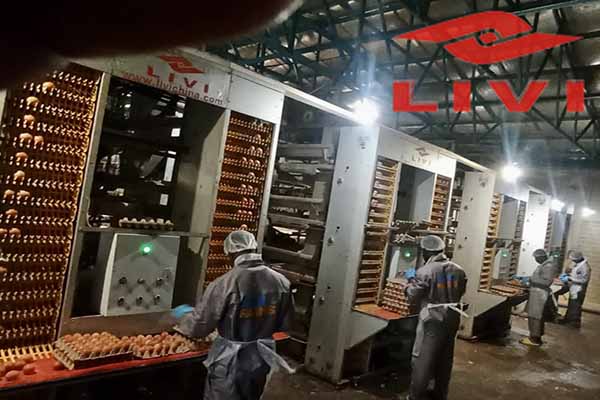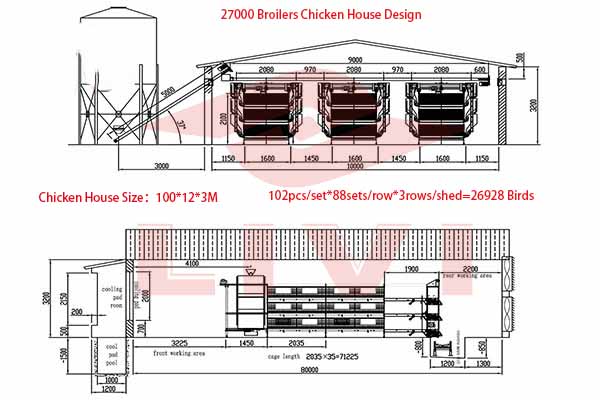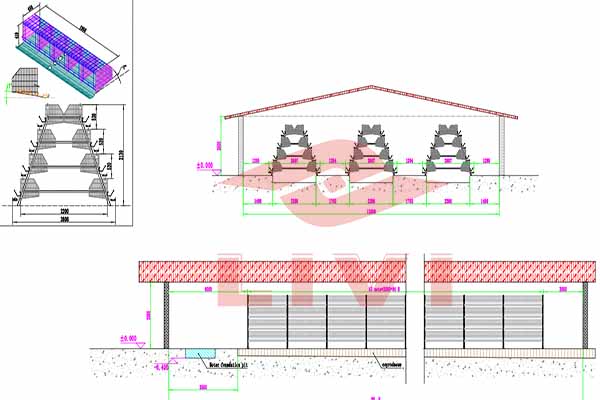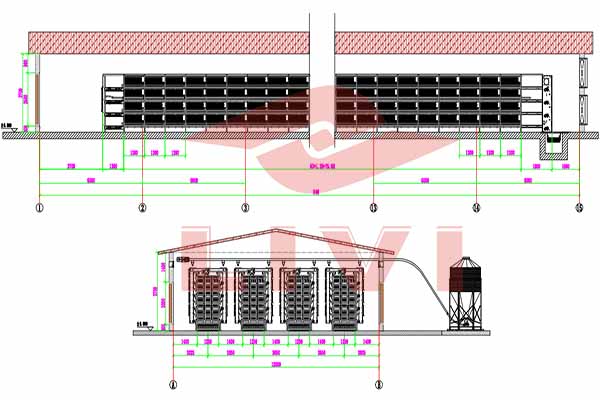Optimizing Chicken Cage Design for Large-Scale Farming: A Case Study in Zambia
Introduction to Large-Scale Chicken Farming in Zambia
Zambia, a landlocked country in Southern Africa, has been increasingly adopting large-scale commercial poultry farming to bolster its agricultural sector. With the growing demand for chicken meat, there is a need for efficient chicken cage solutions. In this article, we delve into the challenges and solutions for chicken cages in a farm housing 100,000 chickens in Zambia.
Why Chicken Cages Are Essential
Chicken cages are not just a housing solution but also a critical factor in the overall productivity and health of the birds. Properly designed cages can improve the quality of meat, egg yield, and reduce the risk of diseases. For a farm with 100,000 chickens, the scale of cage design is particularly important.
Designing Chicken Cages for 100,000 Chickens in Zambia
Here are some key considerations when designing chicken cages for such a large number of chickens in Zambia:
–
- Material: Choose durable materials that can withstand the harsh climate and reduce maintenance costs.
- Airflow: Ensure sufficient ventilation to maintain an optimal environment for the chickens, crucial in Zambia’s climate.
- Space Allocation: Each chicken should have adequate space to move, typically around 3 to 5 square feet per bird.
- Health Management: Design for easy cleaning and sanitization to prevent disease outbreaks.
- Efficiency: Implement automation for feeding, water supply, and egg collection to maximize efficiency.
Case Study: The Largest Chicken Cage Solution in Zambia
The farm in Zambia housing 100,000 chickens implemented a cutting-edge chicken cage solution with the following specifications:
–
- 2000 square meters of floor space, accommodating 100,000 chickens.
– “Material: Steel rods with galvanized finish for corrosion resistance.”
– “Airflow: Equipped with adjustable fans for temperature control.”
– “Space Allocation: 5 square feet per bird with adjustable perches.”
– “Health Management: Easy-to-clean surfaces with automated systems for waste removal.”
– “Efficiency: Automated feeding, watering, and egg collection systems.”
These designs significantly increased the farm’s productivity, reducing disease rates by 40% and improving egg production by 20%.
Benefits of Optimal Chicken Cages
By using these optimal chicken cages, farms like the one in Zambia have experienced numerous benefits, including:
– Enhanced bird health and welfare.
– Reduced feed conversion rates.
– Increased egg and meat yield.
– Lowered operational costs through automation.
Conclusion
For any chicken farm owner or investor in Zambia considering a large-scale chicken cage solution for 100,000 chickens, careful planning and design are crucial. With the right cage design, the benefits can be substantial.
Contact Us for a Free Chicken Farm Design
Interested in implementing a similar solution for your chicken farm? Leave us a message, and our team of experts will provide you with a free chicken farm design and equipment quotation.
, , , , 




